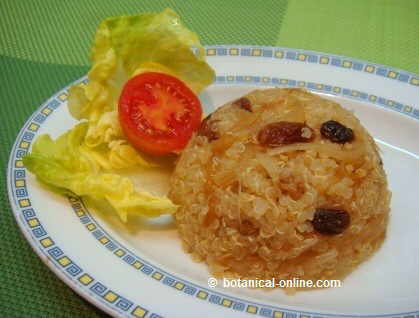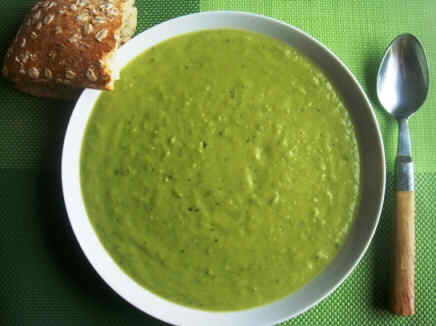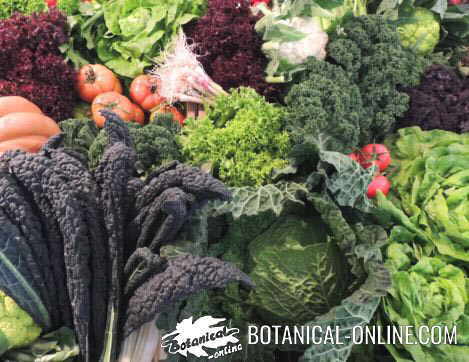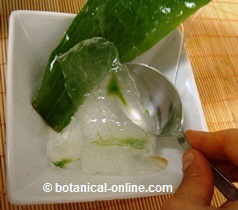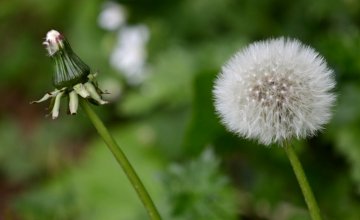Contents
- 1 Types of food antinutrients
- 1.1 How many types of antinutrients exist?
- 1.2 How are antinutrients classified?
- 1.3 Classification of antinutrients
- 1.4 Antinutrients that inhibit digestive enzymes
- 1.5 Antivitamin factors that block vitamins
- 1.6 Antinutrients that affect the assimilation of minerals
- 1.7 Polyvalent antinutrients
- 1.8 Seed activation to decrease its antinutrient content
- 1.9 Other culinary techniques to eliminate antinutrients
Types of food antinutrients
How many types of antinutrients exist?
Antinutrients are substances that are found naturally in many plants that are consumed in food. The main function of antinutrients in plants is to allow competition and survival of the species.
There are different types of antinutrients, since each plant has different defense mechanisms.
How are antinutrients classified?
A general way to classify antinutrients is based on their effects on the digestibility of food.
For example, people who have anemia will find it useful to know which antinutrients sequester iron.
Classification of antinutrients
Antinutrients can act on the absorption of the following nutrients:
- Proteins, fats and carbohydrates: digestive enzyme inhibitors are a type of substances that affect digestive enzymes and therefore the assimilation of these nutrients.
- Antivitamins: substances that affect the assimilation of vitamins.
- Antiminerals: substances that affect the assimilation of minerals.
- Polyvalent antinutrients
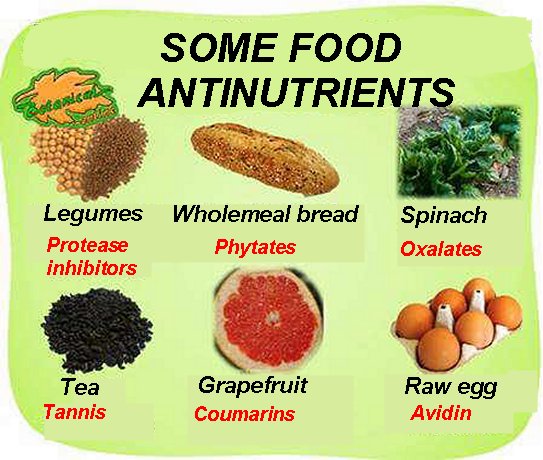
Antinutrients that inhibit digestive enzymes
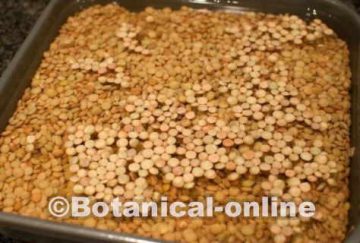
Within this group are plant substances that prevent the action of digestive enzymes. Enzyme inhibitor antinutrients affect the absorption of nutrients such as carbohydrates or proteins, depending on the enzyme on which they act.
The most important type of antinutrient in the diet are protease inhibitors, substances that prevent the function of protease enzymes, such as trypsin, responsible for the digestion of protein-rich foods.
The richest foods in this type of antinutrients are legumes, such as soybeans or peas, rich in antitrypsin (a substance that binds trypsin and deactivates it).
Legumes also contain amylase inhibitors, which block the enzymes responsible for the assimilation of carbohydrates.
These enzyme inhibitors are not usually a nutritional problem since they are destroyed with cooking and with the germination of the seeds.
Fresh milk also has an antitrypsin substance or factor. This is eliminated by boiling the milk, sterilizing it, pasteurizing it, or after a heat treatment, since the antitrypsin component it contains is inhibited at 80 ° C.
Antivitamin factors that block vitamins
Antivitamins or antivitamin factors are those substances present in food that prevent the correct assimilation of vitamins. Some of these substances complex or capture vitamins and prevent their absorption, others react with vitamins and destroy them.
In general, antivitamins are not toxic in the doses found in the diet. The scarce problem of these substances is due to the fact that most are destroyed during the preparation of recipes. However, they do have important contraindications in some cases. The most dangerous factors are K antivitamin or coumarins.
* More information: Food antivitamins
Antinutrients that affect the assimilation of minerals
Mineral antinutrients are those that block the absorption of minerals. They generally act forming complexes that prevent the assimilation of minerals.
Within this group there is a wide variety of chemical substances, very abundant in plants and in our diet, such as tannins, oxalates, caffeine, fiber phytates, goitre producing compounds of cruciferous, saponins and phosphates.
Many of these substances are polyvalent antinutrients, as they interact with various minerals.
* More information: Mineral antinutrients
Polyvalent antinutrients

Some of these antinutrients are versatile, that is, they inhibit the absorption of various nutrients at the same time. For example, the case of tannins, which prevent the assimilation of thiamin (vitamin B1) and B12, in addition to some minerals. This is one of the reasons why tea and coffee in excess are not recommended for people with anemia.
Seed activation to decrease its antinutrient content
In some foods, mainly in whole grains (legumes, nuts, whole grains and pseudocereals) it is possible to decrease their antinutrient content and increase their bioavailability in nutrients through what is known as seed activation.
* More information: Seed activation
Other culinary techniques to eliminate antinutrients
With proper food preparation techniques, it is possible to eliminate most antinutrients from legumes, seeds and cereals such as oats, lentils, nuts, almonds or other foods.
![]() More information on antinutrients
More information on antinutrients



